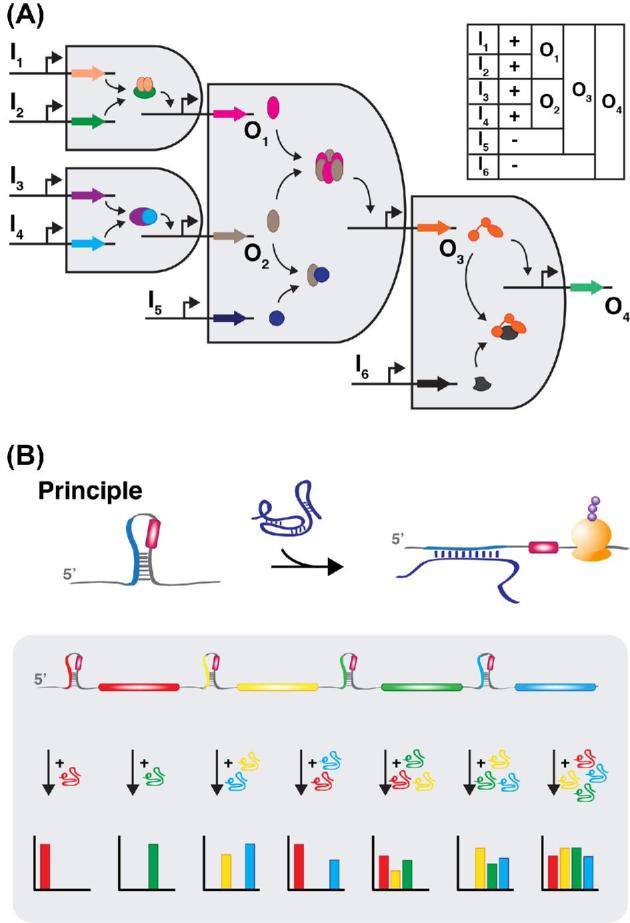Figure 5.

Theoretical examples of synthetic circuit building for orthogonal gene expression. (A) Hypothetical example of a three-level circuit for orthogonal gene expression combining various gates and integrating multiple signals. The modules on the left represent two AND gates in which inputs I1 and I2 allow the synthesis of a TF and its chaperone (green and salmon colored symbols) that will activate the production of the output O1 (magenta colored), whereas inputs I3 and I4 ensure the synthesis of the two parts of a split TF (or alternatively of a split single subunit RNAP) (purple and light blue colored symbols), which will result in the production of output O2 (taupe colored). O1 and O2 form a hetero-oligomeric TF that will allow the production O3, an orthogonal alternative σ factor (orange colored) that eventually will ensure the synthesis of the final outcome O4. However, this will only occur in the absence of the inputs I5 and I6. In the presence of I5, the formation of the hetero-oligomeric activator (O1-O2) will be inhibited by sequestration of O2 upon binding with an alternative binding partner (dark blue colored), whereas in the presence of I6 the orthogonal σ factor will be sequestered by its cognate anti-σ factor (black colored). (B) Orthogonal gene expression based on toehold switches with co-localized RNA sensing and output modules. In toehold switches, the RBS is not accessible for ribosome binding, unless the RNA secondary structure is disrupted by interaction of the mRNA with a complementary synthetic sRNA. Importantly, and in contrast to other regulatory mechanisms operating at translational level (see Figs 6–8), in toehold switches the RBS is not part of the double-stranded RNA structure, which allows more flexibility in the design of the switch and its cognate synthetic sRNA (Green et al.2014). In the example shown here, synthesis of one or more synthetic sRNA in the cell will allow ribosome binding and translation of the cognate ORFs (here represented by red, yellow, green and blue fluorescent proteins).
